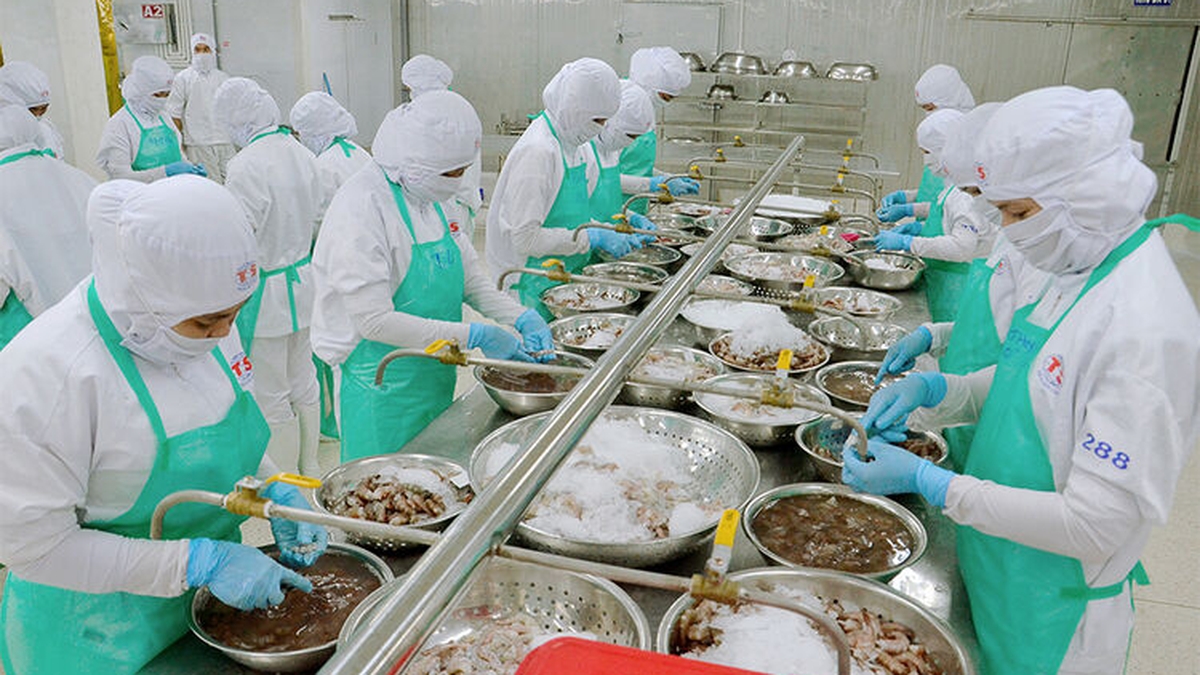Ginger root is not only used as a spice but also for medicinal purposes, reducing bloating, flatulence and treating many other health conditions...
Ginger root (ginger root) has been studied for its effects on digestive disorders, arthritis, cancer, and many factors related to cardiovascular health. The antiemetic (nausea-reducing) effects of ginger root may be beneficial during pregnancy, motion sickness, and after anesthesia.
1. Nutrition of ginger root
Five slices of fresh ginger (or about 11 grams), provide:
- Calories: 8.8
- Protein: 0.2 g
- Fat: 0.08 g
- Sodium: 1.43 mg
- Carbohydrates: 1.96 g
- Fiber: 0.22 g
- Sugar: 0.187 g
Ginger root, like many other plant foods, is composed of macronutrients (protein, fat, and carbohydrates) and contains a variety of vitamins and minerals. However, the amount of vitamins and minerals in ginger root is very small. The nutritional benefits and therapeutic potential of ginger root are often related to the bioactive compounds it contains.
2. Some benefits of ginger root
2. 1. Ginger root is rich in antioxidants
Ginger root contains several bioactive compounds that have been shown to promote health. Antioxidants are bioactive compounds that neutralize free radicals, preventing oxidative stress and disease-causing cell damage.
Bioactive compounds in ginger include:
- Gingerol and shogaol: These are the main compounds that give ginger its characteristic spicy flavor and are the main components that provide its health benefits. Gingerols, such as 6-gingerol and shogaol, have many anti-inflammatory and antioxidant properties.
- Paradol and zingerone: These compounds are also found in ginger root, contributing to its overall health benefits, including antioxidant, antibacterial, and anti-inflammatory benefits.
- Terpenoids and terpenes: Terpenoids may help remove damaged cells. Specific terpenes in ginger, such as limonene, linalool, have been studied for their potential neuroprotective (brain-protective) properties.

Ginger root helps relieve muscle pain
2. 2. Ginger root reduces muscle and joint pain
Ginger is known for its anti-inflammatory properties, mainly due to the compounds gingerol and shogaol, which can block pathways in the body involved in inflammation. Because excessive inflammation is one of the causes of pain.
Clinical trials have shown that ginger helps reduce muscle soreness after exercise. Consuming 2 grams of raw or heat-treated ginger daily reduces inflammation, while supplementing with 4 grams of ginger can speed up muscle recovery after intense exercise.
Other studies have shown that ginger helps relieve symptoms of arthritis, which is often made worse by inflammation. Arthritis is a condition that causes pain and discomfort in the joints.
2.3. Ginger reduces indigestion
Ginger is also said to help relieve indigestion. When consumed, ginger and its various components work within the digestive tract to soothe the digestive organs, stimulate stomach contractions, promote gastric emptying as well as intestinal motility.
These effects help relieve symptoms such as bloating, gas, pain, and nausea, often associated with delayed gastric emptying and functional dyspepsia (chronic indigestion). Ginger also helps relieve symptoms of gastroesophageal reflux disease (GERD).
2.4. Improve blood flow
Ginger, specifically the compound 6-gingerol, has been studied for its effects on blood pressure. Research suggests that ginger may improve vasodilation (widening of blood vessels to allow better blood flow) and regulate sodium levels. However, more clinical studies are needed to confirm these findings.
2.5. Supports healthy blood sugar levels .
Clinical trials have shown that ginger may help control blood sugar in people with type 2 diabetes. Daily ginger supplementation (1-3 grams per day) for several weeks has been shown to improve fasting blood sugar (FBS) and HbA1c levels. Some studies have also shown reductions in triglycerides and total cholesterol.

Ginger should not be used while taking coumadin (warfarin) or other blood thinners.
2.6. Improve cholesterol levels
Daily ginger supplementation is also beneficial for cholesterol control. Maintaining healthy cholesterol levels reduces the risk of heart disease.
A clinical trial in obese women with breast tumors found that daily ginger supplementation along with water exercise was associated with improvements in cholesterol levels. Results showed that ginger supplementation was associated with lower low-density lipoprotein (LDL) cholesterol and triglyceride levels, and increased high-density lipoprotein (HDL) levels.
3. Risks of using ginger
Ginger is generally safe to consume. The U.S. Food and Drug Administration recommends a maximum daily dose of 4 grams per day, as higher doses of ginger can cause stomach upset and acid reflux. Although allergies to this spice are rare, a certain enzyme found in ginger (cysteine proteinase GP-1) causes allergic reactions in some people.
Ginger should not be used if you are taking Coumadin (warfarin) or other blood thinners because it may increase the risk of bleeding. Ginger also increases the risk of hypoglycemia (low blood sugar) if taken with certain diabetes medications.
For people who are taking any medications, it is advisable to consult a doctor before drinking ginger water daily or using other types of ginger concentrate…
Source: https://giadinh.suckhoedoisong.vn/loi-ich-va-rui-ro-khi-dung-gung-172241025165800663.htm

























































![[Maritime News] Treasury Department Targets Diverse Networks Facilitating Iran's Oil Trade](https://vphoto.vietnam.vn/thumb/402x226/vietnam/resource/IMAGE/2025/7/14/43150a0498234eeb8b127905d27f00b6)










































Comment (0)